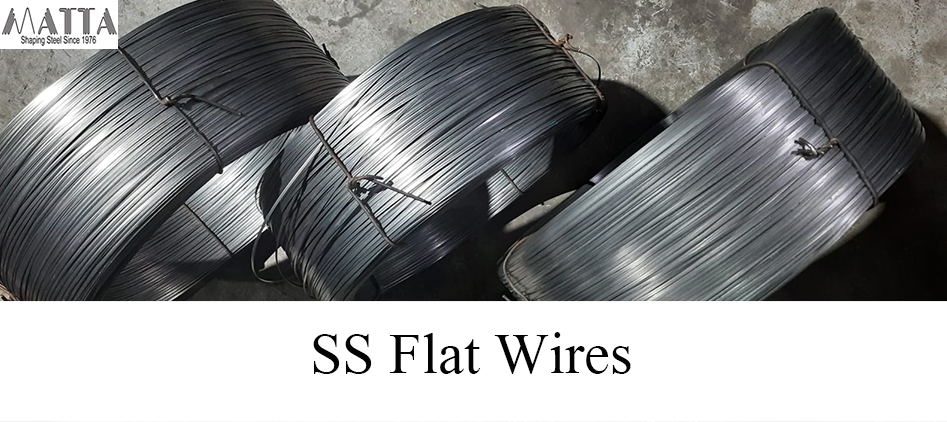Welcome to
On Feet Nation
Members
-
SMART TOWKAY PTE. LTD. Online
-
-
Blog Posts
Top Content
What Are The Common Grades And Applications Of Ss Flat Wire?

Stainless steel is a common material used in industries and is adaptable to multiple manufacturing uses. It is also extensively used in medical field as it has the capability to meet applications that are in demand at relatively much lower costs. Stainless steel shaped wire is available in a variety of tempers and flat wire shapes. Flat ribbon finished stainless steel shaped wire is known as SS flat wire.
SS flat wire is extremely useful in multiple industrial manufacturing and processes. Stainless steel round bars are hot rolled to form flat wire. It is ideal for all applications where high strength, great thickness, and corrosion resistance is required. Due to its versatile applications, SS flat wire is used in a wide range of industries such as automotive, shipbuilding, textile, defense, textile, fabrication, heavy earth moving equipments, paper and pulp, construction, and cement.
Common Grades and applications of SS Flat Wire
Grade 304 SS Flat Wire
304 SS flat wire is among the most common and economical stainless steel flat wire. It has a dull, durable, grainy mill finish and is used in multiple types of fabrication projects that are mostly exposed to the elements. Due to its high tensile strength of around 621 MPa, grade 304 stainless steel is noteworthy among all steel alloys. It also has a high maximum operating temperature of 870 Celsius. Grade 304 SS Flat Wire is mostly used in kitchen equipments, stainless hardware, and hose clamps, etc.
Matta Drawing is among the leading flat wire manufacturer in India. SS flat wire produced by us is high in quality, and can be used in multiple applications of various industries.
Grade 316 SS Flat Wire
It is another commonly used variety of stainless steel that falls under the category of austenitic stainless steels. Having a lower tensile strength (579 MPa) and lower maximum operating temperature (800 Celsius) than Grade 304, Grade 316 stainless steel, however has a better chloride resistance than Grade 304. Therefore, it is a better choice for any application that involves exposure to chlorides or salt.
316 SS flat wire has better non-magnetic properties than Grade 304 and therefore, the major applications include food, marine, and medical applications. They are also used in the manufacturing of engineered components, wire mesh, and springs.
Grade 430 SS Flat Wire
Not being as strong as any austenitic stainless steels, Grade 430 stainless steel though has excellent resistance against nitric acid. However, it has a lower tensile strength of 450 MPa; it is more than enough strong for many heavy duty works.
The major applications of Grade 430 SS flat wire include refrigerator cabinet panels, dish washer linings, chimney liners, automotive trim, etc.
Grade 434 SS Flat Wire
Grade 434 is a stronger alternative of grade 430 with a maximum operating temperature of 815 Celsius and better tensile strength of 540 MPa. SS flat wire made of Grade 434 stainless steel is used in furnace combustion chambers, gas http://www.bbc.co.uk/search?q=flat wire burners on heating units, steam iron bases and flatware, oil refinery equipments, etc.
Grade 420 SS Flat Wire
After annealing, grade 420 has a tensile strength of 586 MPa but when stress and hardened relieved, the tensile strength of this material jumps to almost 1586 MPa. This grade is not chemically resistant, but can resist mild acids, food compounds, water, and some alkalis.
This is the reason Grade 420 SS flat wire is used in the manufacturing of cutlery and in applications where impact resistance and tensile strength are main concerns.
Why stainless steel is better than other steel materials?
Steel materials are among the most commonly used materials all around the world and are used in both commercial and consumer related applications. The major differences between all steel materials are in terms of ductility, strength, cost, hardness, etc. Also the components added to the steel to increase its usability are also different. The major differences between stainless steel and other steel materials are listed below.
· Steel is manufactured by adding carbon to iron, that increases the strength of iron and hardens it. Mild steel or carbon steel has low melting point with higher carbon content. Whereas, stainless steel has high chromium content, forming an invisible layer on surface that prevents the steel from staining or rusting.
· Stainless steel is resistant to rusting due to the addition of chromium, nickel, molybdenum, and nitrogen while it is prepared. On the other hand, other steel materials are prone to rusts and stains.
· Stainless steel is lustrous and shiny at surface whereas other steel materials are dull with matte finish. Chromium coating in stainless steel makes it more attractive without being painted. Consequently, flat wire made out of stainless steel is mostly used for decorative purposes and jewelry making.
These above mentioned reasons make stainless steel better than other steel materials. That’s why stainless steel is highly demanded among flat wire manufacturer all over the world.
Conclusion
Stainless steel is probably the most used material for the manufacturing of flat wire. Due to the wide range of properties, it is highly applicable in multiple applications and is therefore common between shaped wire manufacturers.
© 2024 Created by PH the vintage.
Powered by
![]()
You need to be a member of On Feet Nation to add comments!
Join On Feet Nation